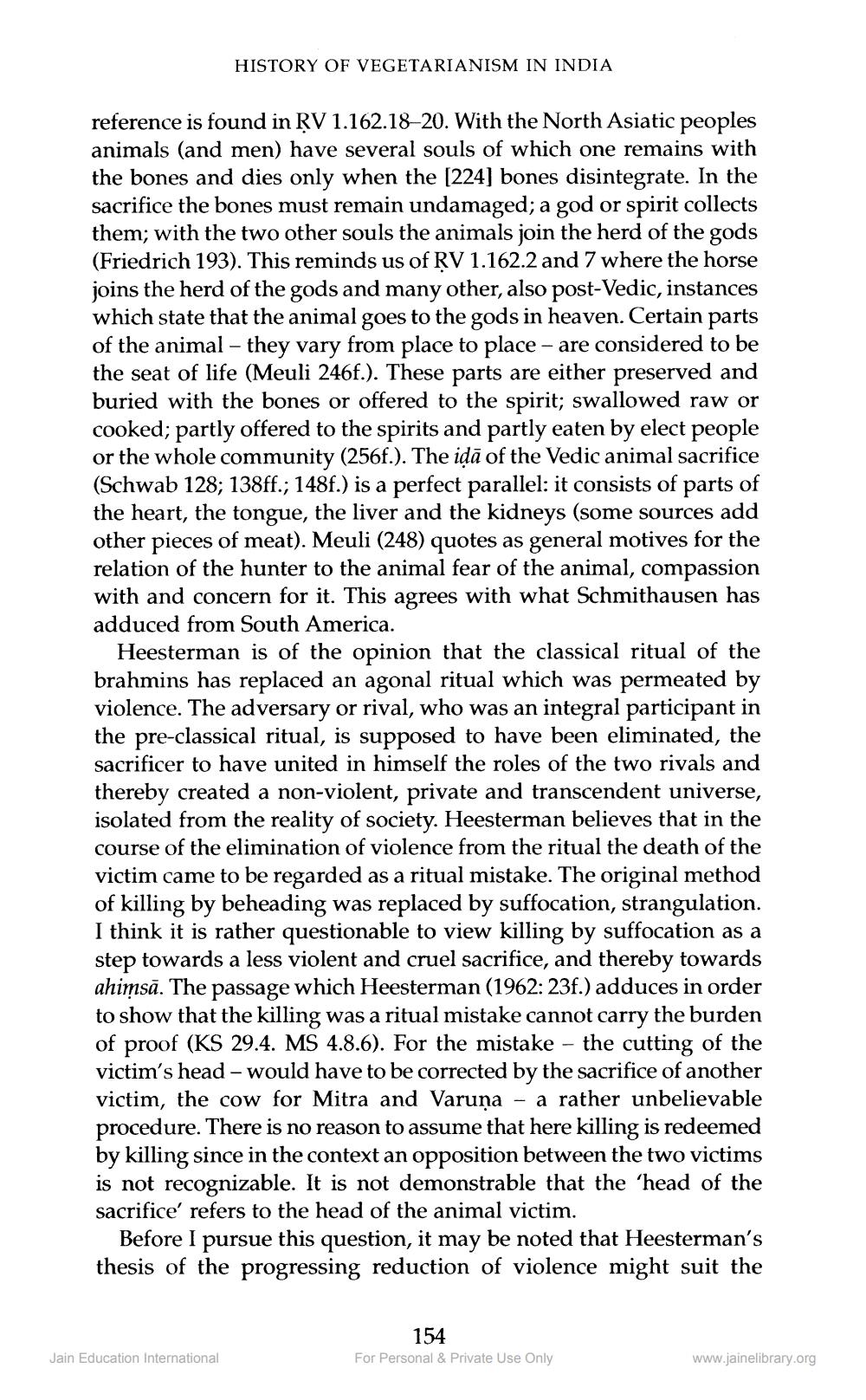________________
HISTORY OF VEGETARIANISM IN INDIA
reference is found in RV 1.162.18–20. With the North Asiatic peoples animals (and men) have several souls of which one remains with the bones and dies only when the [224] bones disintegrate. In the sacrifice the bones must remain undamaged; a god or spirit collects them; with the two other souls the animals join the herd of the gods (Friedrich 193). This reminds us of RV 1.162.2 and 7 where the horse joins the herd of the gods and many other, also post-Vedic, instances which state that the animal goes to the gods in heaven. Certain parts of the animal – they vary from place to place - are considered to be the seat of life (Meuli 246f.). These parts are either preserved and buried with the bones or offered to the spirit; swallowed raw or cooked; partly offered to the spirits and partly eaten by elect people or the whole community (256f.). The idā of the Vedic animal sacrifice (Schwab 128; 138ff.; 148f.) is a perfect parallel: it consists of parts of the heart, the tongue, the liver and the kidneys (some sources add other pieces of meat). Meuli (248) quotes as general motives for the relation of the hunter to the animal fear of the animal, compassion with and concern for it. This agrees with what Schmithausen has adduced from South America.
Heesterman is of the opinion that the classical ritual of the brahmins has replaced an agonal ritual which was permeated by violence. The adversary or rival, who was an integral participant in the pre-classical ritual, is supposed to have been eliminated, the sacrificer to have united in himself the roles of the two rivals and thereby created a non-violent, private and transcendent universe, isolated from the reality of society. Heesterman believes that in the course of the elimination of violence from the ritual the death of the victim came to be regarded as a ritual mistake. The original method of killing by beheading was replaced by suffocation, strangulation. I think it is rather questionable to view killing by suffocation as a step towards a less violent and cruel sacrifice, and thereby towards ahimsā. The passage which Heesterman (1962:23f.) adduces in order to show that the killing was a ritual mistake cannot carry the burden of proof (KS 29.4. MS 4.8.6). For the mistake - the cutting of the victim's head - would have to be corrected by the sacrifice of another victim, the cow for Mitra and Varuna - a rather unbelievable procedure. There is no reason to assume that here killing is redeemed by killing since in the context an opposition between the two victims is not recognizable. It is not demonstrable that the head of the sacrifice' refers to the head of the animal victim.
Before I pursue this question, it may be noted that Heesterman's thesis of the progressing reduction of violence might suit the
154 For Personal & Private Use Only
Jain Education International
www.jainelibrary.org




